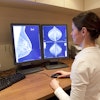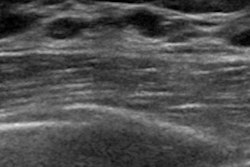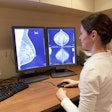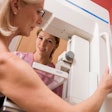AI can detect interval breast cancers that may often be overlooked, according to research published on March 28 in Clinical Radiology.
For their study, Prof. Levent Çelik, MD, from Maltepe University Hospital and Erkin Aribal, MD, from Acibadem University, both in Istanbul, Turkey, found that when AI was implemented into breast cancer screening in a middle-income country, it achieved high sensitivity and specificity in detecting interval cancers that were initially labeled as BI-RADS 1 or 2.
“AI has the potential to enhance screening mammogram outcomes, particularly in countries with limited resources, by reducing human errors and detecting more undepictable cancers with an expense of a possible higher recall rate,” the study authors wrote.
Previous studies have demonstrated AI’s efficacy in reducing interval cancers, identifying between 12% and 50% of these cancers. The researchers noted that the level of success depends on thresholds chosen for the technology’s implementation.
Middle-income countries make up 108 countries with a gross national income per capita ranging from $1,136 to $13,845. These countries contribute about 30% to the global gross domestic product (GDP) and make up about 75% of the world's population.
Çelik and Aribal studied the efficiency and accuracy of a commercially available AI algorithm (Transpara v1.6, ScreenPoint Medical) in detecting interval cancers in a middle-income country national screening program.
The study included data from 2,129,486 mammograms reported as BI-RADS 1 or 2. The researchers matched these with the national cancer registry for interval cancers. The interval cancer group consisted of 406, while a control group consisted of 446 women with two negative consequent mammograms, defined as time-proven normal.
The AI algorithm issued cancer risk scores on a one-to-10 scale, with 10 indicating extremely elevated risk. The team also employed specificity thresholds of 90% and 95% for the system.
The team found that the AI system labeled 53% of interval cancers with a score of 10. The system achieved a sensitivity of 53.7% at the 90% specificity threshold and 38.5% at the 95% specificity threshold.
The researchers also highlighted the AI system’s performance in detecting major and minor signs of interval cancers.
| AI system performance in detecting minor, major signs of interval cancer | ||
|---|---|---|
| |
95% threshold |
90% threshold |
| Sensitivity (major signs) |
72.4% |
81.6% |
| Sensitivity (minor signs) |
53% |
70% |
The study also included two experts with over 30 years of experience reading breast images. The researchers reported showed that 26.8% of interval cancers had major findings that both readers missed. AI meanwhile detected 78.9% of these cases with a score of 10.
Finally, the system achieved area under the curve (AUC) values of 0.93 for detecting major signs of interval cancer and 0.87 for detecting minor signs.
In light of their results, the study authors wrote that it is necessary to conduct additional real-life studies to find out the appropriate approach for using suitable AI algorithms in national screening programs. They added that such studies can help optimize strategies utilizing both AI and human readers.
The full study can be found here.



















